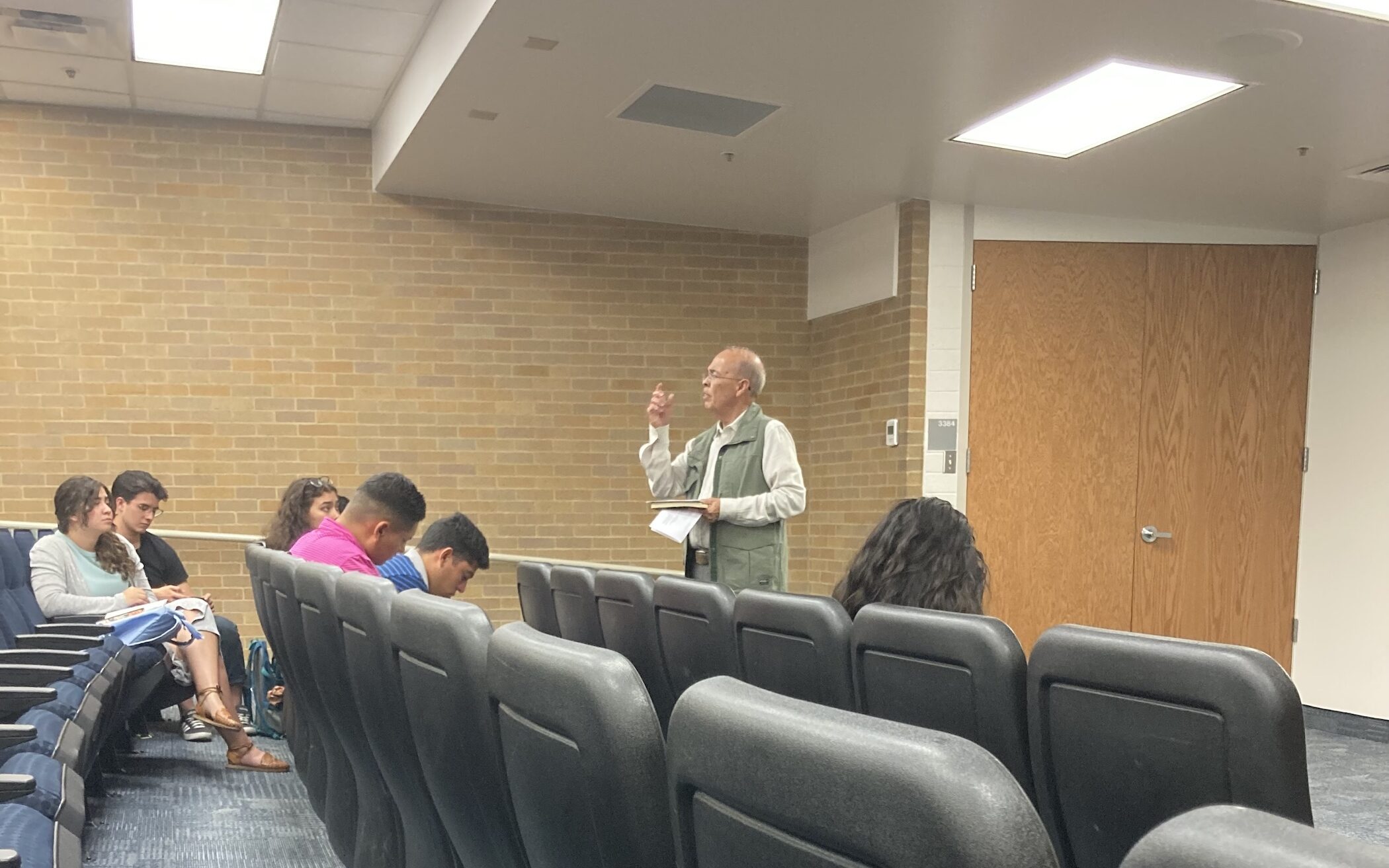
BYU’s Hispanos Unidos and Anti-Racism Club combined efforts on the night of Sept. 29 to host a discussion led by BYU history professor Ignacio Garcia about the implications of “Lamanite” identity among Latino and Indigenous communities in the Church.
Garcia reported on experiences he had at a conference called “Indigenous Perspectives on the Meanings of ‘Lamanite.'” That conference was hosted by BYU alumnus Farina King, a member of the Diné (Navajo) tribe.
Garcia said being a Lamanite is not about connecting to a historical or group identity, but rather connecting to a spiritual identity as someone who waits on the Lord.
In his address, Garcia highlighted the different ways communities feel about the Lamanite identifier. He said some Native American and Tongan scholars at the conference associated the Lamanite identity with colonization and colonialism, and were hesitant to accept the name. But Garcia said the term is one he and other Latino members of The Church of Jesus Christ of Latter-day Saints commonly accept.
“I grew up in a Spanish ward. We were all Lamanites, and the Book of Mormon was our history,” Garcia said in his lecture.
He said this subject can be controversial in part because the word “Lamanite” is socially constructed, and thus influenced by cultural perspective.

Garcia added that understanding the importance of perspective is essential in understanding Lamanite identity. He said he has read the Book of Mormon and focused specifically on the perspectives of the Lamanites, deconstructing the text in order to better understand it.
Garcia said the term “Lamanite” is not inherently racialized and was first tied to skin color through Nephi’s description of “white” and “black” peoples, or later during Joseph Smith’s translation of those same passages. He said that language, unfortunately, has been used by church leaders like Brigham Young to weave white supremacy into church procedures and structures.

Garcia impressed upon listeners that “Lamanite” as a term can be reclaimed by people who are marginalized even though church members sometimes use scriptures and promises to create in-groups and out-groups. “If we want to embrace [the Lamanite identity], we need to step outside those neat boundaries,” Garcia said.
Hispanos Unidos secretary David Garcia Prada worked with Emily Peterson, the president of the Anti-Racism Club, and the other members of the groups to put on this event. They said the clubs collaborate once or twice every semester and that this event comes at the end of Hispanic Heritage Month.
Growing up, Prada said he considered himself a Lamanite and his family always said they descended from the Lamanites. But if a white peer ever called him a Lamanite, he said he would have been offended or hurt.
“There’s so much history behind it, especially around how people perceive it and how it’s been used,” Prada said. “But I think it’s really important that we reclaim these words and titles so that we can empower ourselves.”
Peterson said she had mixed feelings about the term. She said she feels uncomfortable when people use language, like Lamanite, to justify colonialism or inequality, but the discussion helped her see just how nuanced this debate is.
“I like the idea that they’re just people waiting on the Lord, and that God loves the marginalized and those are the people God wants to lead His church,” Peterson said.




